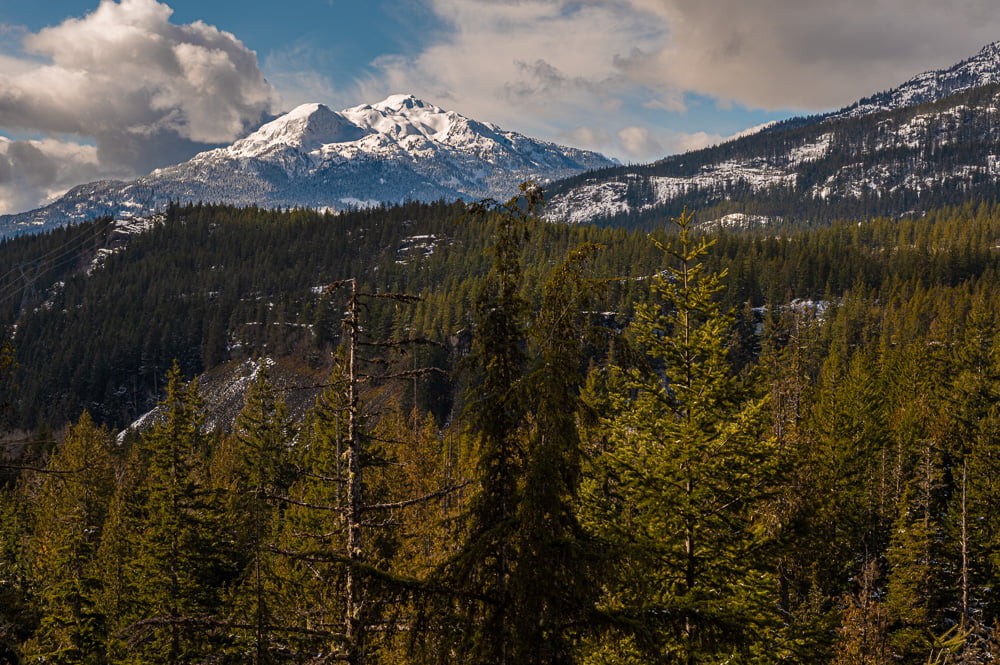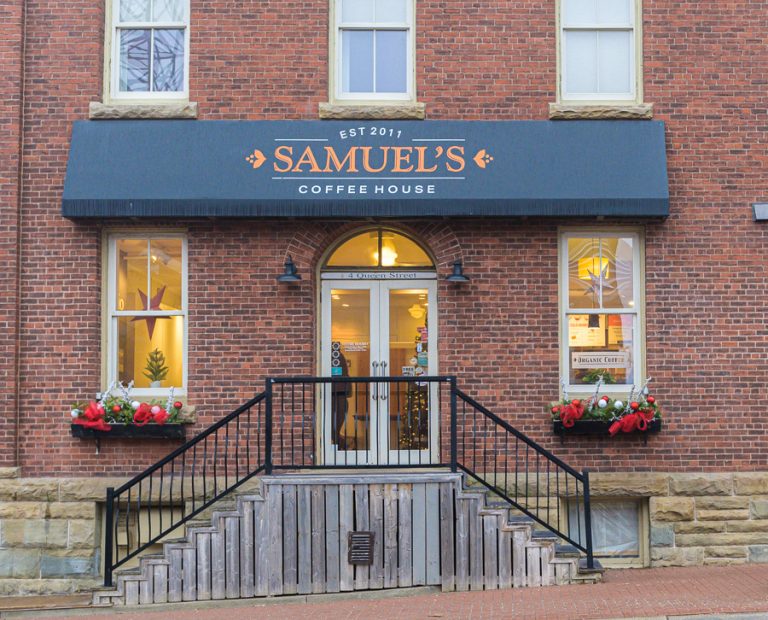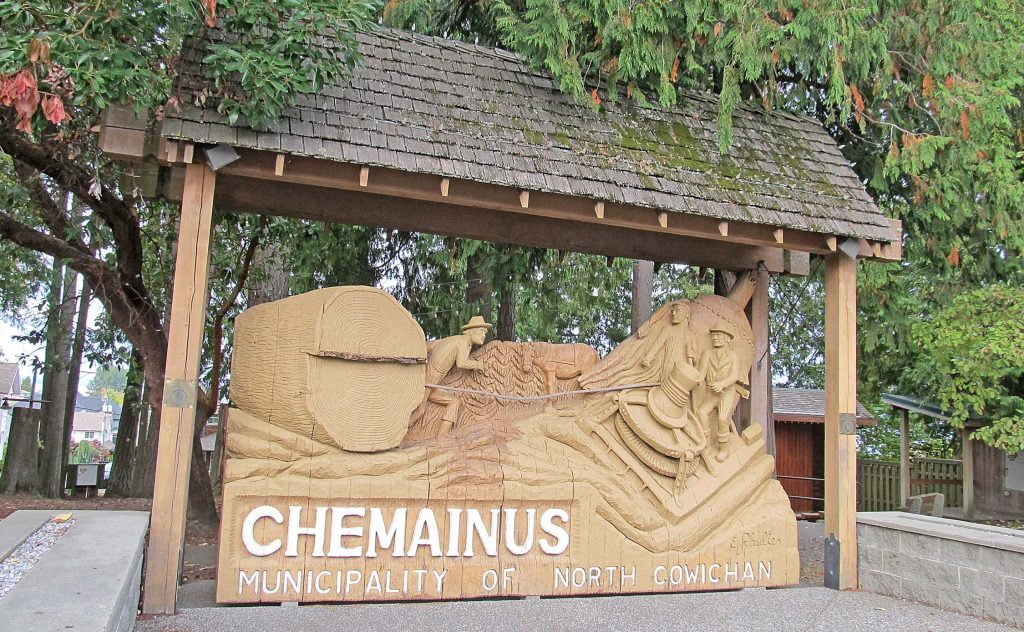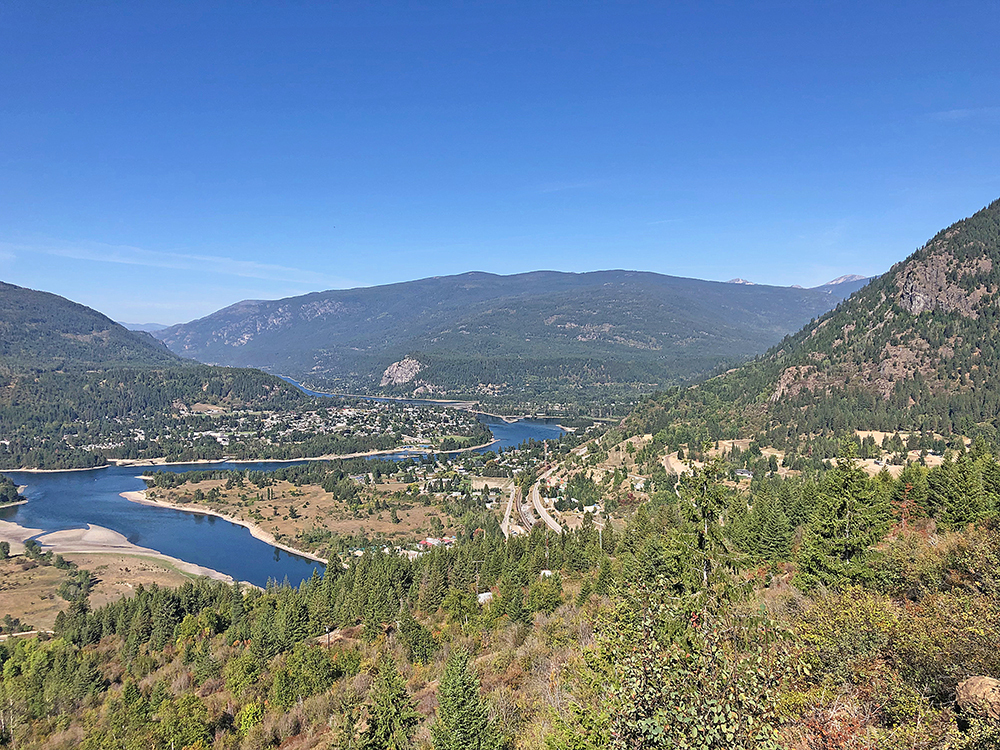Picking up where we last left off – I finished writing part one in Chéticamp, Cape Breton Island, and headed out for the next leg of my coast-to-coast-to-coast trek.
The Hostage Island (aka Prince Edward Island) leg of the trek started on a less than auspicious note. I got stuck for two days waiting to cross the bridge because of high winds. Just me and a couple hundred highway trucks. Most of the trucks running their engines, or reefers all day and night. Suffice it to say there was not a lot of sleep those two nights. Fortunately, I got to the holding area early enough that I was at the head of a line and when the bridge re-opened at about 2:00 in the morning, I jumped in the truck and got outta Dodge. In my Dodge. Leaving the island a couple weeks later, there was a hold on high-sided vehicles again. This time only for about eight hours.
On the island, in the off-season, there aren’t a lot of services for RVers. I only found one place, in Summerside, to empty waste tanks. There are only a handful of places that refill propane tanks, as well. In PEI and other provinces, I have found Esso stations very RV friendly for getting fresh water. The dump site in Summerside is at an Esso station, too. Fuel for heating in the colder months is certainly important, so that’s something to keep in mind when travelling in the off-season.
Road Fuel
Fuel for heating and cooking is important. Fuel for our vehicles is important. Maybe most important of all is human fuel. By that I mean coffee. When driving long distances, those cup holders certainly come in handy.
A good cup of coffee is a thing of beauty. It has depth of flavour and aroma. It soothes. It inspires. It lifts. Cradling a cup of hot coffee in the hands on a cold day is pure comfort. Smells and tastes of nuts, cocoa, earthiness, mintiness can all be found in good coffee. The mouth feel is silky, smooth. It has substance. There’s a complexity. It’s pleasing. It can be a spiritual experience.
I openly admit that I am an unabashed coffee snob. At home, I hand roast my own beans. In the trailer, I have my burr grinder, a percolator and a French press. The perc and press produce different results with the same beans and some days I’m in the mood for one, or the other.
Bad coffee, on the other hand, is simply a crime against the tastebuds. Sure, it may give a caffeine hit. It’s like taking cough syrup. It tastes bad, but it works. Coffee shouldn’t be like medicine.
I managed to find a really decent cup of coffee at a Sobey’s Express in Nova Scotia. It came from a Keurig machine, but the beans were ground fresh for each cup. It was hot, had some cocoa notes and a hint of natural sweetness.
Now, if you want really good coffee of course the chains are not the place to go. Independent coffee shops are where it’s at. Not all of those are good, certainly. Here a few that I found stood well above the rest.
In New Brunswick, Grains de Folie in Caraquet makes a lovely cup of coffee. They’re also known for their latté art. Ask Jean-Pascale to make you a lobster. The bakery makes really good breads, as well.
Samuel’s Coffee House in Summerside (there’s a seasonal shop in Cavendish, too) makes an especially fine cup. It’s smooth, not bitter, has a depth and complexity of flavour and is a pleasure to sit and sip. While you’re doing that, try the date square, also.

Front counter of Samuel’s Coffee House.
Columbia Coffee in Aldergrove BC brews a really nice cup of coffee. Their Nicaraguan medium roast has a pleasant natural sweetness and none of the grassiness that some medium roasts (that aren’t really medium) can have. They also sell whole beans and have a really good selection of crêpes both savoury and sweet.
Prince Edward Island is a quaint little place. The people are very friendly and always willing to talk. A couple times, I had locals follow me some fair distance just to talk about my trailer and what I was doing with it in the cold months.
Tourism is a big part of the economy of the province. Like in New Brunswick and Nova Scotia, tourism is seasonal so a lot of interesting things were closed when I was there. In Cavendish, even the Tim Horton’s is seasonal! That doesn’t mean there’s nothing to do.
At North Cape, on the northeast corner of the island, a large wind farm has been installed. From the back of the Wind Energy Interpretive Centre, there’s about a 6km walking trail that takes you along the coast. It runs through varied geography. It crosses a large bog that would have spectacular colour in fall. Overnight RV parking at the interpretive centre is accepted.
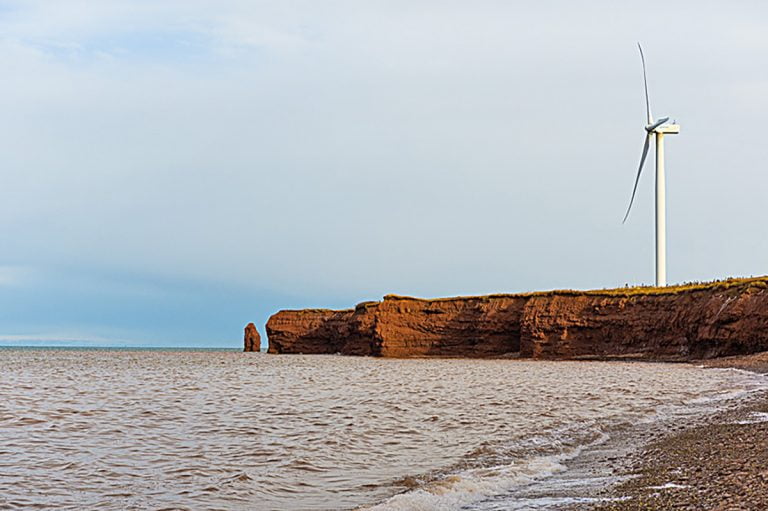
The Elephant Rock sea stack is dwarfed by a wind turbine on the top of the cliff.
The main road across the island is Highway 2. Cavendish Farms is headquartered in PEI. They have two large processing plants on either side of Highway 2 near New Annan. As you drive by, if the plants are operating, you’ll get a fantastic smell of French fries and your mouth may start to water. Sadly, I wasn’t able to find a chip truck to sate that desire.
North Rustico is a lovely little town on the north shore and well worth checking out. Several interesting shops and a wonderful harbour area.
When you get your coffee at Samuel’s in Summerside, you can get it to take away and go for a walk along the waterfront boardwalk. It’s a lovely walk along the coast, about 6km in length.
As with the other Maritime Provinces, there are many lighthouses on the island. The website www.lighthousefriends.com has a list and locations for the lights on the island, as well as NB and NS. Some, like the ones at North Cape and West Cape have historic significance. At West Cape, you can also see the impact of coastal erosion caused, in part, by climate change. The lighthouse is in definite danger and like several others, will have to be moved if it is to be saved.
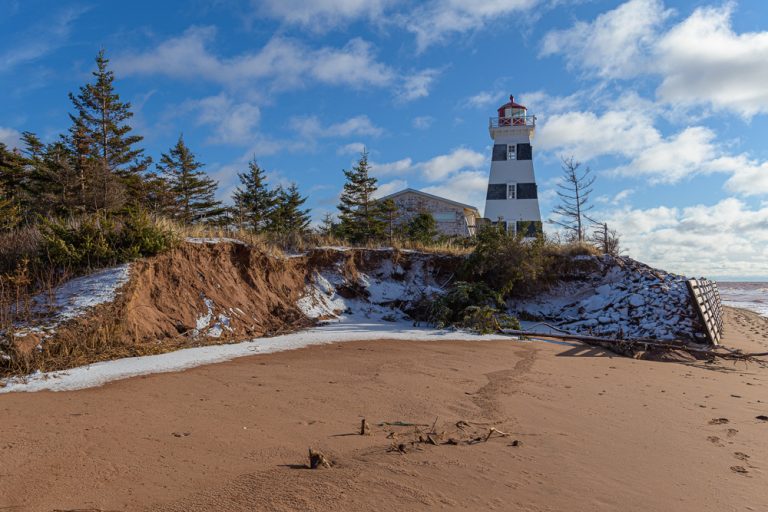
Erosion threatens the West Point Lighthouse.
For a good six weeks; my entire time in Nova Scotia and Prince Edward Island, there was not a night that the trailer was not buffeted by high winds. At Tracadie Bay, high winds and cold temperatures, -18C with -26C with the windchill, made for an interesting night. I had frost in the trailer on a few other nights. That was the worst. Frost accumulated on the window frames and around the door. Drafts around some of the windows made keeping warm that night a little more difficult.
Leaving PEI and heading home for Christmas, I had my first night without wind in six weeks while staying overnight at Grand Falls, NB. It was actually eerily quiet and oddly a bit uncomfortable not to have that feeling of being ungently rocked to sleep.
The insulation in the trailer for the water lines is good to about -11/-12C. Below that the lines would start to freeze. Even at -18C in Tracadie, temperatures went above freezing the next day and the lines thawed out again. Once temperatures dropped below the threshold and stayed below freezing, that was it for water in the trailer temporarily. Water lines finally froze for good on my way home for Christmas, so I stopped in Quebec and had a winterization done. That held me until I got to Vancouver and Vancouver Island. Washing in the morning was a little more difficult as a result. I boiled bottled water in a kettle and used that to wash. Walmart sells 4L bottles of water for $.97, which made the process quite economical. No dishes could be done and food was just prepared meals bought at stores that could be put in the oven, or microwave. Paper plates and plastic cutlery were the order of the day for the time being.
While home over Christmas and New Year’s, I put shrink plastic on the windows. It definitely helped with the drafts. On the way west there were a couple nights with temperatures of about -23/-24C and windchills into the mid -30s. No drafts, less frost on the windows and I was able to keep the trailer at a comfortable 16/17C in the evening and 13C while sleeping.
A popular modification owners make is to replace the mechanical thermostat that comes standard on most RVs with a digital one. I too have made this upgrade. An interesting thing about these digital thermostats is they don’t work in extreme cold. When the temperature inside the unit drops below freezing the display reads Lo and it won’t come on until the space heats up. I discovered this on my way back home, driving in -18/-19C temperatures. When I stopped to fuel the truck, I decided I would turn the furnace on so that it wouldn’t be completely frigid when I stopped for the night. It was below zero in the trailer and the thermostat wouldn’t work. Solution? I tried taking the thermostat into the truck. That warmed it up to where it would work again. Problem? It couldn’t heat the space fast enough to make up for the temperature difference so ended up displaying Lo when I stopped for the evening about half an hour later. Solution 2? The thermostat sits on the wall directly across from the stove, so I lit all three stove burners and waited until those heated up the area around the thermostat enough that it would function again. Now, when I’m driving in cold temperatures, I have the furnace running while driving with the temperature set at the lowest point (40F/5C). It uses a little more propane. The trade-off of having heat immediately when I stop is worth it. Necessity really is the mother of invention.
All the Modification Conveniences
Keeping with the theme of owners modifying their rigs, there are a couple others I’ve made along the way.
I switched out the 2, 6 volt lead acid batteries for 2, 6 volt AGM batteries. The AGM batteries charge faster, can be discharged more deeply without damage and are more tolerant to the cold than standard lead acid types. They also charge better with my solar panels and charge better with the connection to the truck while driving.
The other thing I’ve done is added eye and hook latches to several of the drawers and cabinet doors in the kitchen area. After stopping a couple times, coming into the trailer and finding things strewn all over the floor; including broken dishes and glass, something had to be done. They don’t necessarily look great, but they do the job.
Interestingly, when I came west through the U.S., I was stopped at the border coming back into Canada in Alberta. I think the Canadian Border Patrol officers were bored and wanted something to do. After making a quick run through the trailer, one of the officers said he liked the hook and eye latch idea. He said he had seen many trailers come through with belongings strewn all over the floor when he had gone in to do his inspection.
Changing the aerator on kitchen and bathroom faucets may go a long way to improving water pressure in the rig. I changed both of mine and instantly got great pressure and flow.
While neither modification, nor a convenience, another thing to check occasionally is your plumbing connections, specifically the hand-tightened ones under sinks. Vibrations from driving can cause these to come loose over time and can lead to a bit of a messy situation. I check mine every time I stop if I’ve had a particularly bumpy ride. Same with screws on door hinges, latches and cupboard hinges.
Winter camping in the west – Alberta and British Columbia – is quite different from elsewhere in the country. In Ontario for example, there are only a couple provincial parks that have RV campsites open year-round and I’m not aware of any private campgrounds open in the winter. In the Maritimes, there is nothing open for RV winter camping. Travelling in winter in most of Canada means overnighting in Walmart parking lots, or other similar locations that allow RVs to park. It’s not possible, unfortunately, to set up a base of operation and make day trips from there. It is more difficult in winter throughout most of Canada.
Both Alberta and British Columbia however, embrace winter camping. In parts of BC; around Vancouver and on Vancouver Island, it stays warm enough that it makes sense for campgrounds to stay open. Even outside these areas where temperatures can get quite frosty, there are many campgrounds open to RVers all year long. Services at the campsite are more limited, of course. You’ll likely only have power. Maybe sewer. More likely a central sewer dump somewhere on the facility. And for the most part, no water (parts of BC excepted).
Mount Kidd RV Park is a private park in the Kananaskis area that is open all year. A web search for “winter RV camping Alberta” will bring up plenty of options, several of which are in provincial parks. The website
https://www.campingrvbc.com/winter/ has a comprehensive list of campgrounds in BC open year-round. Some may be temporarily closed due to weather conditions or concerns regarding the Covid-19 outbreak.
One very nice campground I found was the Eagle Wind RV Park in Aldergrove. It’s about halfway between Langley and Abbotsford, and roughly 40 minutes east of Vancouver. The grounds are very well maintained, the owners and management are also very nice and helpful. Sites have a row of cedars on each side for a bit of privacy and it’s gated at night for security. Power, sewer and water are available, although your outside water hose may freeze up occasionally.

My setup at Eagle Wind.

Wider view of one section of the Eagle Wind RV Park.
If you plan to go to Tofino, or Ucluelet on Vancouver Island, be sure to check for road closures on Highway 4. There is a lot of work being done on the road about 20km outside of Tofino and the highway is closed regularly. It’s also closed irregularly without notice, which is fun. You’ll get to talk to a lot of interesting people if you’re stuck in a line for a few hours. These closures are going to go on for several years apparently. You may even be able to take time to go for a bit of a hike, which is what I did to get this shot of snow-capped mountains across the lake.
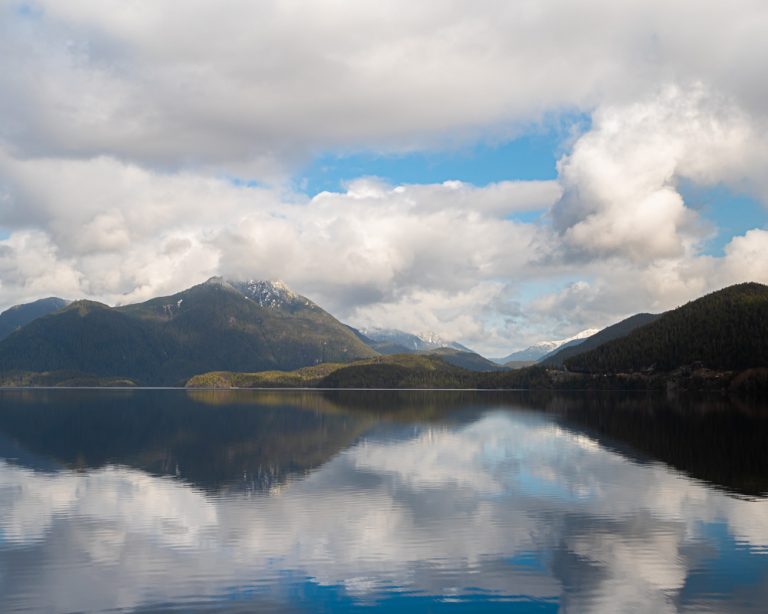
Making the best of a construction delay and finding a lovely scene.
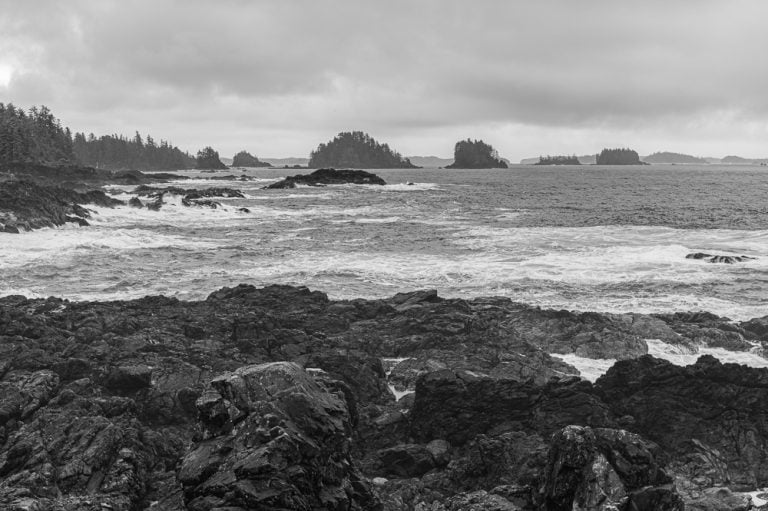
The coastline around Tofino and Ucluelet on Vancouver Island is rugged and beautiful.
The Whistler RV Park is another location that is open in the winter. Fantastic location and scenery. Not too far from town, or the ski hills. Water can be available, although a heat gun may be needed to thaw the tap. The park office has a heat gun available for just such a purpose. I filled my fresh tank on arrival and used that for the few days I was there. Then filled it again the day before I was to leave and begin the trek north. That’s when things took a bit of a turn.

The view from my ‘backyard’ at the Whistler RV Park.
This was supposed to be the second of four installments in this series. I sold my house back in May 2019 to do this year-long, coast-to-coast-to-coast trek around Canada – going as far east, west and north as possible by road. My intent was to visit all 10 provinces, the Yukon Territory and the Northwest Territories, but my adventure was unexpectedly cut short. I tore my Achilles tendon while on a hike in Whistler and am unable to drive so have to abandon, or at least suspend, the trek. I hired someone to drive my truck and trailer to a park in the lower mainland where I’ll stay until I can drive again. The hike wasn’t a complete loss, I was able to get some nice photos before it all went sideways.

View from a hike in Brandywine Falls Provincial Park just outside of Whistler

